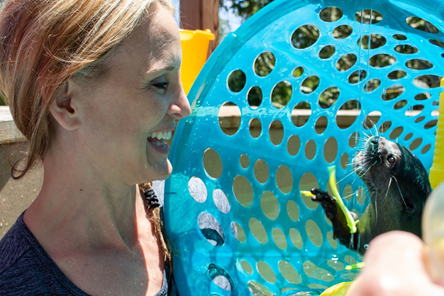Life in a pandemic. How are we ever going to fully express what this chapter has been like? We have watched loved ones literally struggle for breath, a virus become politicized, safety-nets fail, and our sense of security in day-to-day normalcy prove painfully fragile. Of course, we’ve also rediscovered board games, cooking, and the love of sweatpants. Inevitably, the experience has changed us. In some ways, there is new clarity and appreciation for life; in other ways it has been downright painful to watch what human nature can do in times of crisis.
I have been particularly struck by how much more anxiety seems to linger, like irritating white noise that makes everything raw and draining. A wince when strangers pass in a grocery store aisle, averted eyes, or a scowl when seeing kids out on playgrounds. I was a bit perplexed by my own reaction when stepping into an occupied elevator became a moral dilemma.
To safely re-engage with the world, there is more we can do besides wearing a mask and social distancing. We can use neuroception to promote a calmer norm. Neuroception is a term used to describe our body’s way of scanning for cues if we are safe or in danger. This kind of awareness constantly runs in the background, a physical surveillance system signifying to the body how to behave in each moment. If all is well, we feel relaxed and able to connect with others in inviting ways. If we sense something is wrong, our focus shifts to protection and survival.
The great news is through deliberate practice, , we can use this natural phenomenon to help each other. With positive approaches, our interactions are more pleasant, and they literally change our brains for the better. As neuropathways (the nervous system) are soothed, they create a ripple effect to our behavior.
The first part is to remind ourselves that we are all in this situation together; trying to cope with something that we cannot see nor fully understand. Rather than only taking care of our own, let us broaden our sense of family. As we prepare to step out of the house, find that centered place you “click” into when supporting a friend in distress. Many people are not showing up as their best selves, so patience and persistence are the key tools to utilize. Take deep breaths, listen to some lighthearted music (I am not ashamed to say that I have spent a significant amount of time listening to a playlist that includes Sandra Boynton and Muppet tunes) and visualize baby otters. Now the mind and body are ready.
The second part is straightforward: be friendly.
- Give eye contact. Be sure that it is long enough to say, “I see you as a human being” but not so long it seems like we are preparing to pick them out of a lineup.
- Genuinely smile. People may not be able to see our mouths, but the size of our pupils, small wrinkles around the eyes, and energy means we can literally feel the smile. So it is important to really mean it. If you are struggling, revisit the visuals of baby otters, and try again.
- Ditch the devices. We are already working hard to be intentional. It will be even harder if we are multi-tasking, and if our eyes our down, it ensures any real moments of connection will be relegated to missed opportunities.
- When we communicate, 55% is non-verbal. Be sure to have posture that is relaxed and inviting.
- Give a warm greeting. It does not need to be a Hallmark card. “Hi there,” or “Good morning,” can be exactly what is situation calls for.
While there may be a whole lot happening right now that is not in our control, there is still a lot we can do to make the world a better place. Our very biological hardwiring means that we can use even micro- moments to ensure the past year of fear is only a chapter rather than a book in our lives. One step at a time, one smile at a time, “we can hold on to love, like invisible strings” (thank you Gonzo for this moving song from the Muppet Movie).

Resources:
